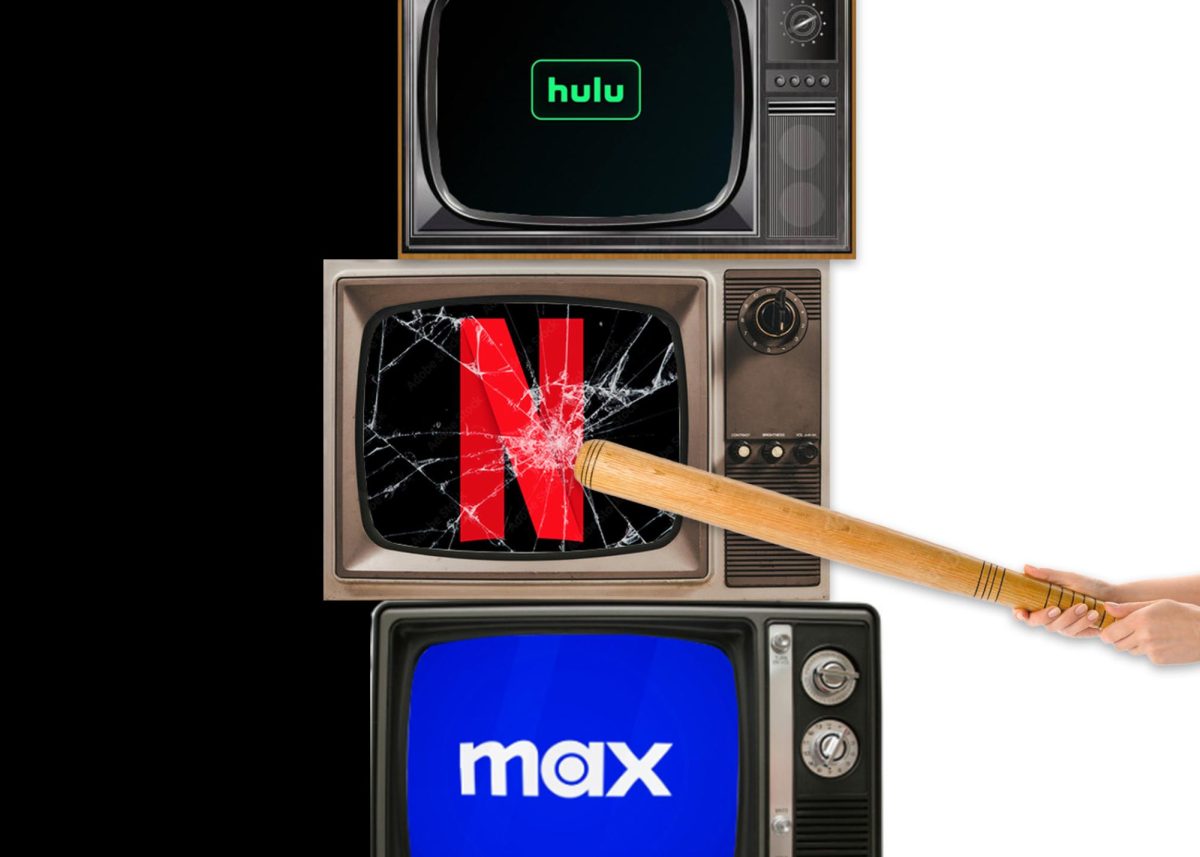Subscription streaming services are my least favorite form of entertainment — the pressure of having to consistently watch from a catalog of shows and movies under the looming threat of an expensive, auto-renewed monthly charge is overwhelming.
Aside from the fact that the prices of subscription plans has steadily increased in recent years, features of streaming services such as Netflix, Hulu and Max that originally gave them their charisma and made them unique are being traded out for ones that ultimately make the experience for patrons more stressful.
The lifespan insecurity for titles on the platforms leave users unprepared for certain shows or movies to be taken off. This also applies to shows being added either season-by-season, as is common with original titles, or with gaps between seasons, which can disrupt the streaming flow for the unaware user.
Original films and television shows produced by subscription streaming services, such as “Netflix Originals” and “Hulu Originals,” are dominating content that attracts patrons to these services in the first place. The concept of platform-specific programming can be charming if you are willing to see any non-original show you may like disappear while Netflix pushes an eighth season of “Élite”.
I have never felt a bigger pit in my stomach than when I saw the entire “Twilight” saga get sacked after staying on Netflix for less than a year. “Call Me By Your Name” (2017), “Get Out” (2017), “La La Land” (2016), the “Spy Kids” franchise and “Ma” (2019) are some examples of titles that Netflix slaughtered this January.
It is understandable that Netflix pushes their original titles in an effort to make a profit, but what possible reason could they have for removing such critically acclaimed movies and series? Netflix’s profits seem to be prioritized over customer satisfaction, and viewers are inconvenienced by these business choices.
College kids are either forced to make additional accounts on their parents’ dime or fund it themselves, creating an unsustainable dichotomy of options for a demographic that is often not financially independent.
Streaming services make unfortunate decisions to increase their revenue. These cost-cutting moves, however, are not reflected in their pricing options. For example, Netflix offers three plans with ad-free and ad-supported options. The ad-supported option costs $7 per month, which, believe it or not, is almost as much as its original unlimited streaming with no ads plan, which cost $8 in 2012.
Other platforms have followed suit with Netflix’s price hikes. In 2023 and 2024 alone, Prime Video increased their ad-free option by $2.99 more per month, Max increased theirs by a dollar, Peacock bumped up both their ad-supported and ad-free tiers by $1 and $2 respectively, and Disney increased prices among all of their platforms — which include Disney+, Hulu and ESPN+. The trend of rising prices extends beyond Netflix and into streaming service culture as a whole, signifying that there is an inherent structural problem with platform planning in recent times.
As many weeping college students know, Netflix has cracked down on password sharing, which makes the organization of multiple profiles pointless if users outside of the household where the Netflix account is set up on the television. College kids are either forced to make additional accounts on their parents’ dime or fund it themselves, creating an unsustainable dichotomy of options for a demographic that is often not financially independent.
TikTok, Instagram Reels and other short-form content platforms offer yet another free alternative to subscription streaming that is fortified by the appeal of bite-sized clips.
For the population of watchers who still live by the standard streaming service model but do not have the funds to pay for a monthly subscription, pirating websites exist. Sites such as The Pirate Ship and 123movies allow users to bypass the paywall of a subscription streaming service, drawing viewers away from big companies by offering a free option.
In addition to piracy being illegal, these websites are often unsafe for users’ computers and leave them vulnerable to viruses. In order to combat the prevalence of piracy sites, streaming services either have to step up their game with titles and features to justify these price hikes or lower prices to more reasonable rates.
The rapid shuffling of content and addition of weekly release schedules is a ploy to keep up viewership and combat streaming fatigue. With the practical monopoly on short-form content platforms, mainly TikTok, were able to secure over the past four years, attention spans are at an all-time low.
Personally, I would never consider watching “Grey’s Anatomy” — a 20-season-long commitment — on Netflix when instead I can watch each episode in 20 or more parts on TikTok. Although this seems inconvenient, TikTok’s model of short videos keeps me hungry for more in a way binging on Netflix does not.
It seems as though the trend of watching short clips of shows and movies on social media has caught on; streaming services have picked up on it and have begun implementing it in their own ways. For example, Hulu’s Instagram account is now incorporating clips of the shows and movies they offer as advertisements. TikTok, Instagram Reels and other short-form content platforms offer yet another free alternative to subscription streaming that is fortified by the appeal of bite-sized clips.
While there are a few worthwhile series and movies on streaming platforms, it does not mean you should be spending an exorbitant amount on subscriptions. Instead of a streaming subscription that is not worth it, maybe use your $23 for that Chipotle burrito and agua fresca.



RJ • Feb 29, 2024 at 2:40 pm
There are many reasons to hate Netflix. I used to have Netflix but two things happened; first, they kept raising prices and cutting back quality of service and two, Netflix starting purging it’s good content and replacing it with “Netflix Originals” aka complete garbage.
So, Netflix is just their very awful “originals” at a much higher price.
No thanks, I want movies and shows made at a time when entertainment wasn’t all about identity politics and had some originality and quality. (pre 2010)